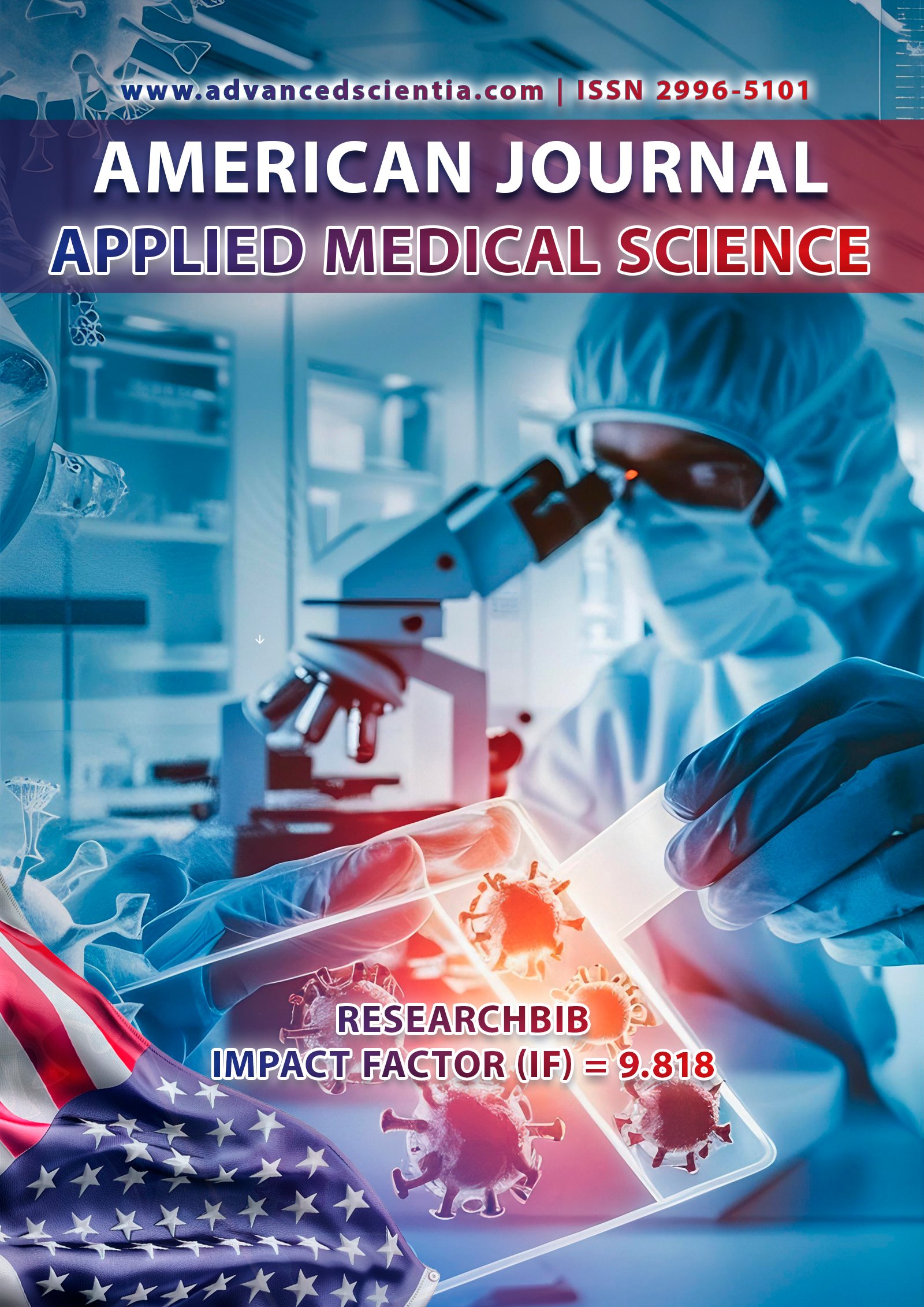FEATURES OF THE COURSE OF PERIODONTAL TISSUE DISEASES IN CHILDREN WITH ADENOVIRUS INFECTION, THE USE OF EXAMINATION METHODS.
Abstract
Modern methods of molecular diagnostics currently used make it possible to successfully study the oral microbiome, quickly detect periodontal pathogens present in diagnostic biomaterial, even in small quantities, and identify clinically significant uncultivated and difficult-to-cultivate types of microorganisms. Considering the above, today a combination of different methods for each specific case is the most optimal.
References
1. Shi B., Chang M., Martin J., Mitreva M., Lux R., Klokkevold P., Sodergren E., Weinstock G.M., Haake S.K., Li H. Dynamic changes in the subgingival microbiome and their potential for diagnosis and prognosis of periodontitis. mBio. 2015; 6(1):e01926-14. DOI: 10.1128/mBio.01926-14.
2. Korzh V. I., Korzh D. V., Artemenko M. V. Orthopedic treatment in the systemic concept of periodontitis. Topical issues of dentistry: A collection of scientific papers dedicated to the founder of the Department of Orthopedic Dentistry at KSMU, Professor Isaac Mikhailovich Oxman. Kazan: Kazan State Medical University; 2021: 620-4.
3. Lamont R.J., Koo H., Hajishengallis G. The Oral Microbiota: Dynamic Communities and Host Interactions. Nat. Rev. Microbiol. 2018; 16:745–59.
4. Tsarev V.N., Arutyunov S.D., Balmasova I.P., Babaev E.A., Nikolaeva E.N., Ippolitov E.V., Ilyina E.N., Gabibov A.G. Molecular diagnostics of periodontitis and metagenomic analysis of periodontal microbiota in patients with type II diabetes mellitus. Bacteriology. 2018; 3(2): 30–7. DOI: 10.20953/2500-1027- 2018-2-30-37.
5. Chapple I.L.C., Genco R. Diabetes and Periodontal Diseases: Consensus Report of the Joint EFP/AAPWorkshop on Periodontitis and Systemic Diseases. J. Periodontol. 2013; 84: 106–12.
6. Zhang Y., He J., He B., Huang R., Li M. Effect of Tobacco on Periodontal Disease and Oral Cancer. Tob.Induc.Dis. 2019; 17. DOI: 10.18332/tid/1061878.
7. Fan J., Caton J.G. Occlusal Trauma and Excessive Occlusal Forces: Narrative Review, Case Definitions, and Diagnostic Considerations: Occlusal Trauma and Excessive Occlusal Forces. J. Periodontol. 2018; 89: 214–22.
8. Lenkowski M., Nijakowski K., Kaczmarek M., Surdacka A. The Loop-Mediated Isothermal Amplification Technique in Periodontal Diagnostics: A Systematic Review. J. Clin. Med. 2021; 10: 1189. DOI: 10.3390/jcm10061189.
9. Wolf D.L., Lamster I.B. Contemporary Concepts in the Diagnosis of Periodontal Disease. Dental Clinics. 2011; 55: 47–61.
10. Chen C., Hemme C., Beleno J., Shi Z.J., Ning D., Qin Y., Tu Q., Jorgensen M., He Z., Wu L. et al. Oral Microbiota of Periodontal Health and Disease and Their Changes after Nonsurgical Periodontal Therapy. ISME J. 2018; 12: 1210–24.
11. Deo P.N., Deshmukh R. Oral Microbiome: Unveiling the Fundamentals. J. Oral Maxillofac. Pathol. JOMFP. 2019; 23: 122–8.
12. Socransky S.S., Haffajee A.D., Cugini M.A., Smith C., Kent R.L. Microbial Complexes in Subgingival Plaque. J. Clin. Periodontol. 1998; 25: 134–44.
13. Aruni, A.W., Dou, Y., Mishra, A., Fletcher H.M. The Biofilm Community: Rebels with a Cause. Curr. Oral Health Rep. 2015; 2: 48–56.
14. Nørskov-Lauritsen N., Claesson R., Birkeholm J.A., Åberg C.H., Haubek D. Aggregatibacter Actinomycetemcomitans: Clinical Significance of a Pathobiont Subjected to Ample Changes in Classification and Nomenclature. Pathogens. 2019; 8: 243.
15. Dahlen G., Basic A., Bylund J. Importance of Virulence Factors for the Persistence of Oral Bacteria in the Inflamed Gingival Crevice and in the Pathogenesis of Periodontal Disease. J. Clin. Med. 2019; 8: 1339.






















